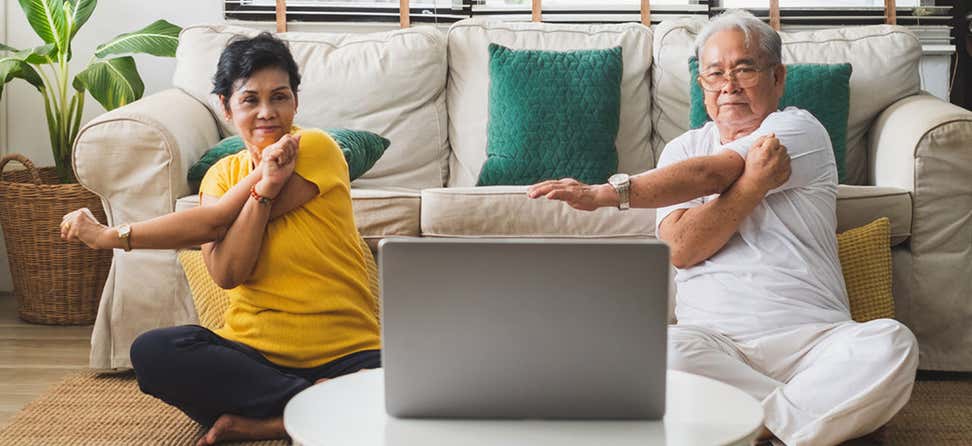Key Takeaways
As program developers are pivoting their health promotion programs from in person to remote, community-based organizations (CBOs) are seeing that majority of aging adults do not have the necessary devices or broadband to participate in health programs.
Download and share the PDF to find resources to help older adults learn the basic functions of their devices.
Get answers to your COVID-19 and technology questions, like where older adults can get free or discounted tablets or how to access the Internet.
NCOA has provided a list of frequently asked questions about connecting older adults to technology and internet services during the COVID-19 pandemic (last updated on September 2, 2020).
Where can I get free or discounted tablets and devices?
- Work with your Area Agency on Aging to see if they can assist with providing tablets.
- Contact technology companies and cell phone providers to inquire if they are open to partnering and donating older models of devices to aging groups. For example: NCOA’s Aging Mastery Program partnered with Verizon a few years ago to provide 200 tablets for older adults. New York City has partnered with T-Mobile to provide internet and tablets to 10,000 New York City Housing Authority older adults.
- Consider purchasing devices in bulk and inquire about the cost differences between new and refurbished options.
- Check around your community for any technology (i.e. iPad, tablet) lending libraries and ask if they have implemented cleaning protocols in response to COVID-19. Research whether participants can borrow a tablet for the duration of a program. For a sample lending library agreement, view a template from South Dakota State University.
iPad-Agreement-Form-BCBH-SD
- If the participant resides with family members, see if they can borrow a device to access services, engage with others, or participate in a health promotion workshop.
What are some resources for older adults to get internet access?
- 8 sources of low cost internet for older adults
- If older adults reside at an assisted living community, check to see if the building management company provides internet service.
- Negotiate a plan with local cable providers for individuals or group purchasing.
- Federal Communications Commission shared a list of companies who have developed economical broadband programs to support consumers all throughout the US during the pandemic.
Can we use a portion of our funding to equip older adults with devices?
-
The Administration for Community Living (ACL) has provided the following guidance:
“Under the authority of the Major Disaster Declaration, which all States are operating under currently, Older Americans Act monies are allowed to be bucketed into any Title to meet the needs of older adults. These needs may include programming at a congregate site, such as telephone reassurance, wellness checks, virtual evidence-based health promotion/disease prevention programs. In addition, meals provided in a group setting that are eaten with another person (virtually), such as coordinating a buddy system or virtual congregate site via Zoom, FaceTime, GoToMeeting, etc. where people dine together can also be implemented using Older Americans Act dollars. Further, Older Americans Act dollars can be used to purchase tablets or laptops for seniors and provide access to Broadband, among other local needs of older adults. ACL’s COVID-19 resources provide more detail on how this can be done. Contact your State Unit on Aging for additional information about use of Older Americans Act monies in your state.”
What are some resources to help older adults learn the basic functions of their devices?
- Senior Planet is hosting free online classes for older adults on topics including introduction to social media, how to use zoom, and virtual social gatherings.
- How to Become Tech Savvy Seniors in 10 Days
- AARP TEK workshops are free of charge to the public
- Instructions for Accessing Your Virtual Workshop through Zoom
- Download the FREE App “Easy Tablet Help for Seniors” on all tablets distributed to older adults. It is available at no cost in the Apple, Google Play, and Amazon App Stores. Note: There are no ads or in-app purchases. The interactive tutorial teaches:
- Basic functionalities: Tapping a touchscreen, enlarging and shrinking a page, scrolling, location of buttons, how to navigate the keyboard.
- Internet safety, searching, and communicating: Texting, video-calling (Zoom, FaceTime, Skype), getting a Gmail account or using an existing email account.
- More: How to use YouTube, the camera, attaching a photo to an email, apps, etc.








